Flying Scotsman restoration completed with BR colours restored
- Published
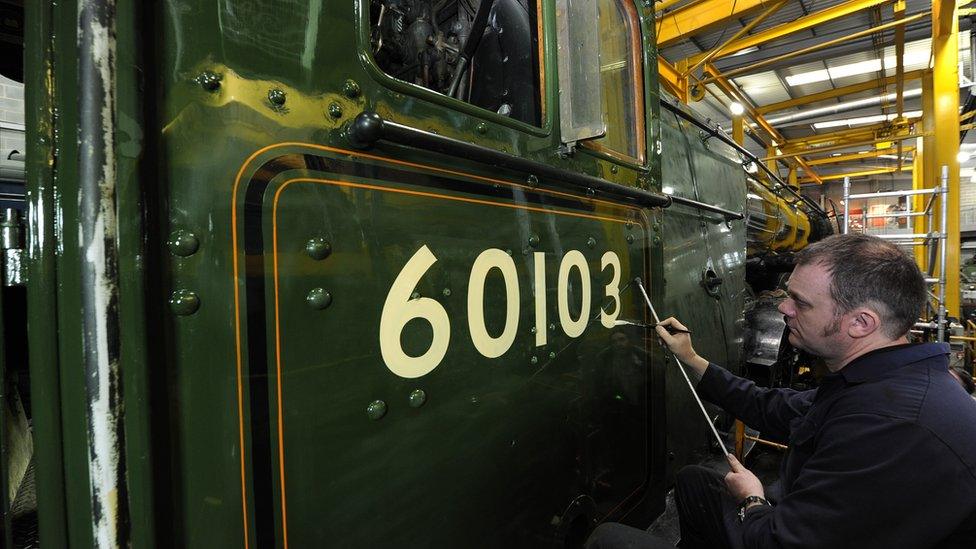
Michael O'Connor painted the locomotive's British Rail number on the cab as the 10-year restoration project reached an end
The end of Flying Scotsman's 10-year restoration project has been marked with it being repainted in traditional British Rail green livery.
The locomotive has also had its British Rail number, 60103, repainted on its cab.
It has been restored for York's National Railway Museum at a cost of £4.2m. Test runs were held in Cumbria and Lancashire in January and February.
It is due to make its first run between London and York on 25 February.
The trip will be its first official outing bearing its nameplates and sporting its new colours.
Andrew McLean, head curator at the museum, said: "To finally get Flying Scotsman fully restored, looking exactly as she should, in steam and alive again will be a really special moment for many people."
He said the shade of green chosen reflected how the engine would have looked during the 1950s and early-60s.
Ian Hewitt, from Lancashire-based Heritage Painting, said it had been a mammoth task to strip off the black paint and repaint the locomotive by hand.
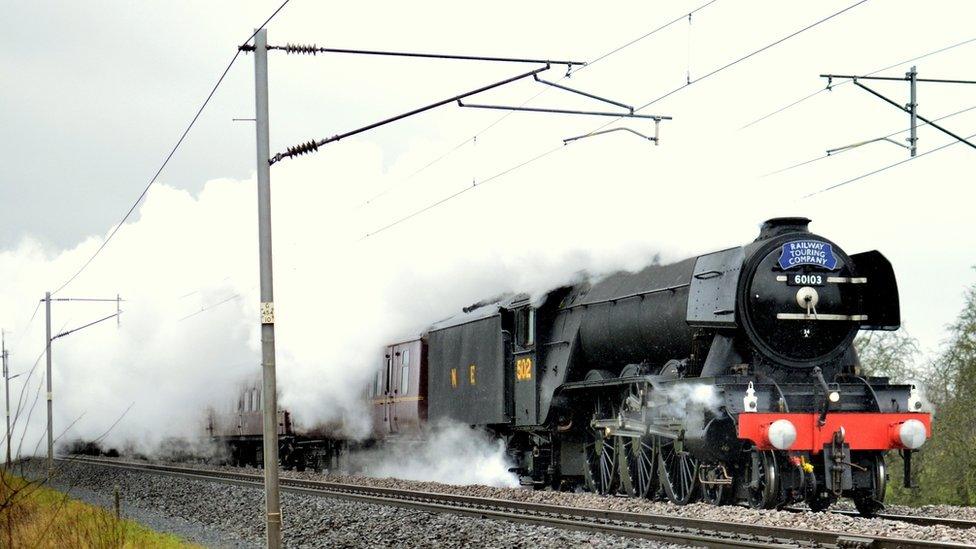
Flying Scotsman, still in its black livery, went on test runs in Lancashire and Cumbria in January and February
"Twenty litres of undercoat, 30 litres of gloss and around 20 litres of varnish and there's about 85 litres of white spirit that we've gone through," he said.
"It's the pinnacle of our careers, and to now see it coming together on the world's most famous locomotive... it doesn't get any bigger for us."

Flying Scotsman
Designed by Sir Nigel Gresley, the Flying Scotsman emerged from the Doncaster Works in 1923
The British Empire Exhibition in 1924 made Flying Scotsman famous
In 1934, Scotsman was clocked at 100mph - officially the first locomotive to have reached that speed. But, some claim City of Truro was the first steam engine to break the 100mph record, in 1904, when it apparently reached a speed of 102mph running down a slope
It is 70ft (21m) long, weighs about 96 tonnes and had a top speed of 100mph
It has travelled approximately 2,500,000 miles
During World War II, it was repainted wartime black

Flying Scotsman was originally built for the London and North Eastern Railway Company (LNER) in 1923 and ran daily between London and Edinburgh.
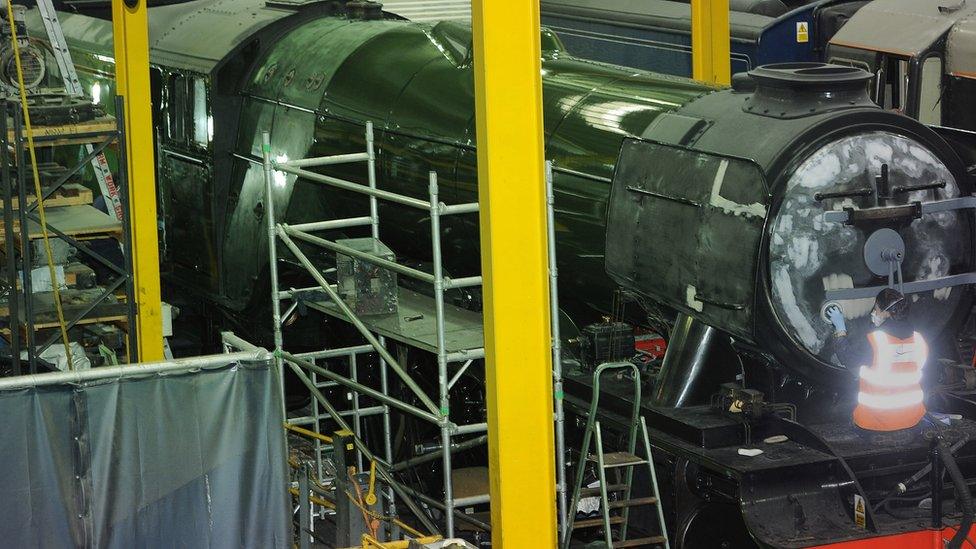
It took 10 days to remove the locomotive's black paint and repaint it in green
The locomotive went out of service in 1963 and spent 40 years in private ownership touring the world.
It was bought for the nation by the NRM in 2004, using £415,000 in public donations, a £365,000 gift from Sir Richard Branson and a £1.8m grant from the National Heritage Memorial Fund.
Restoration work had initially been due to be completed in 2011 but was delayed after cracks were found in the chassis.
Riley and Sons Ltd, of Bury, Greater Manchester, were appointed to complete the restoration work in 2013.
- Published7 February 2016

- Published6 February 2016
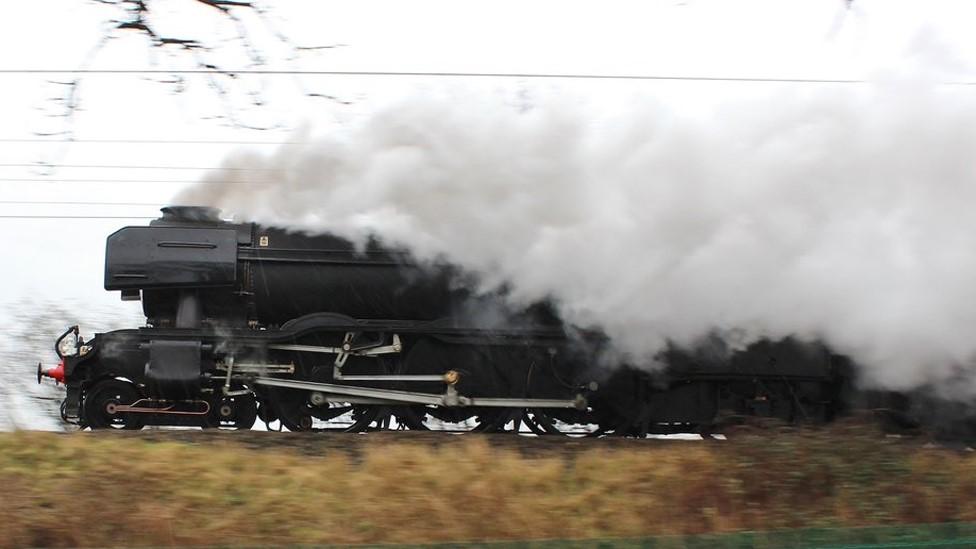
- Published8 January 2016
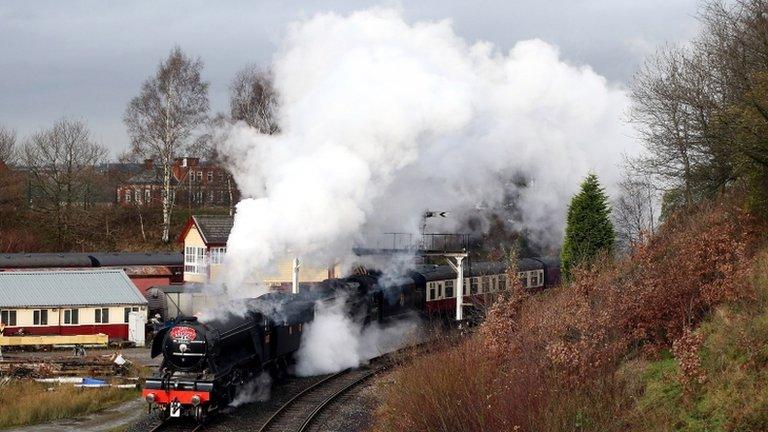
- Published8 January 2016
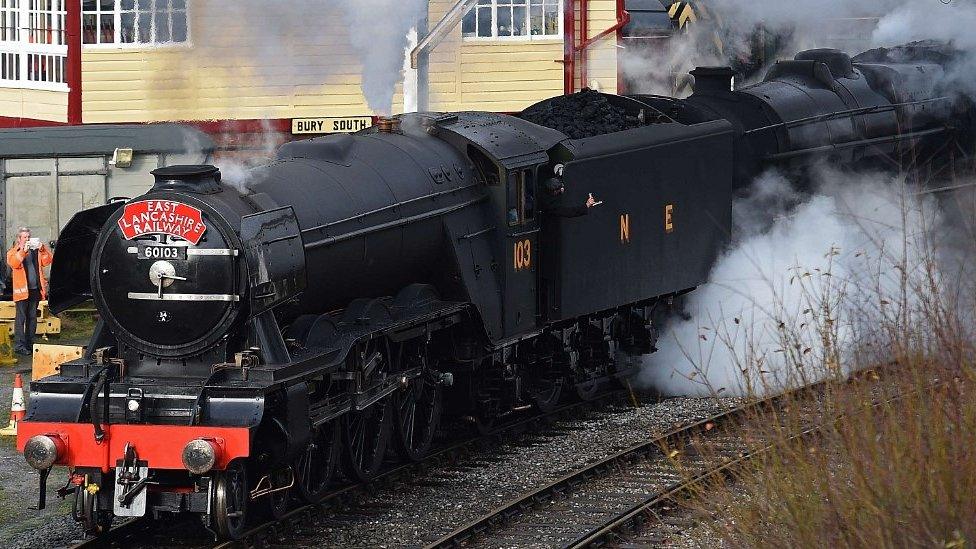
- Published11 December 2015
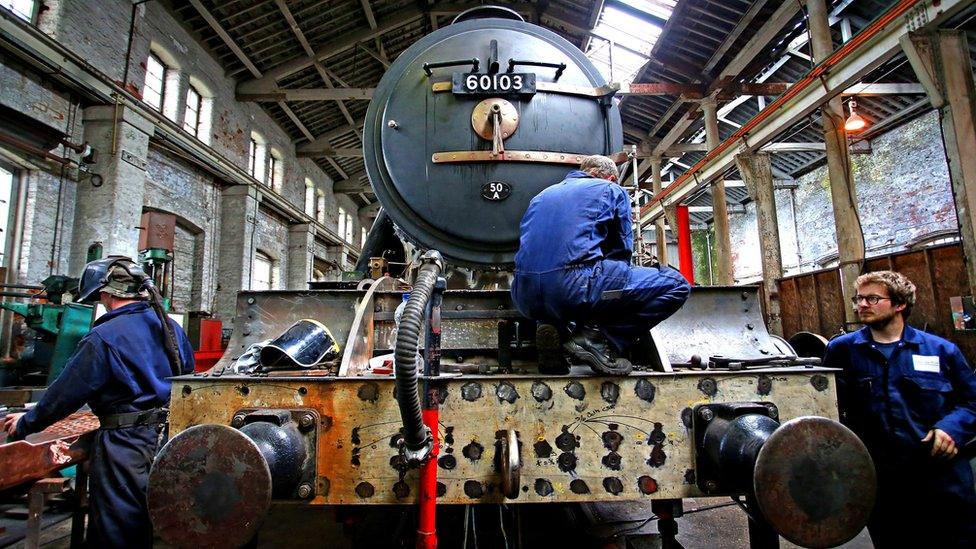
- Published7 July 2011
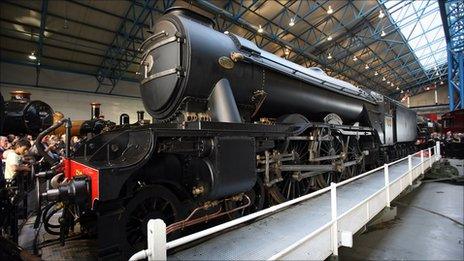
- Published28 May 2011